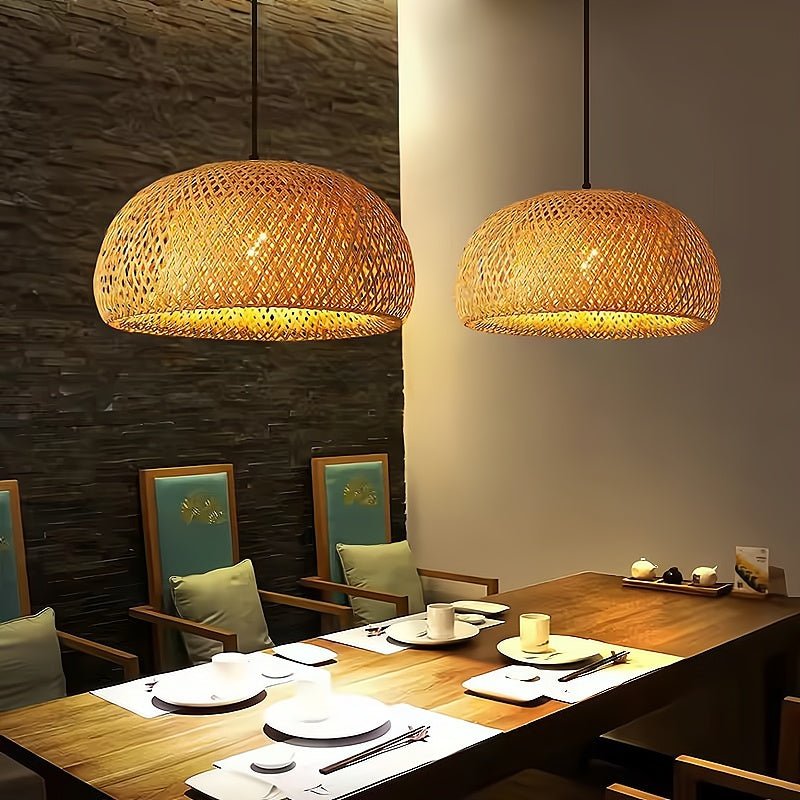
How to Style Your Home with Pendant Lights
Share
The right pendant light doesn’t just brighten your space — it shapes the mood, flow and character of the entire room.
Pendant lights are more than just functional. They’re visual anchors that can make a space feel cohesive, dramatic, or relaxed — depending on how you use them.
In this guide, we’ll show you how to style pendant lights like a pro, with tips that actually make a difference.
1. Understand the Purpose of the Light First
Before you pick a style, ask:
Will this light be used for task lighting, ambient light, or as a focal decor piece?
- Task → You need brighter light over a kitchen island or desk
- Ambient → Softer lighting for general mood
- Decorative → Sculptural design that elevates the whole room
Knowing the purpose helps you choose the right brightness, height, and design.

2. Choose the Right Size for the Space
A pendant that’s too small can feel lost. Too big, and it overwhelms the space.
Here’s a general rule:
- Small pendant (20–30 cm) → Good for bedside tables, corners
- Medium (30–50 cm) → Works well over small tables or in hallways
- Large (50+ cm) → Best for dining areas, high ceilings or open-plan rooms
💡 Try this: Cut a cardboard circle to the pendant’s size and hang it temporarily to see how it fits.
3. Mind the Hanging Height
This is one of the most common mistakes — either too high or too low.
Here’s what works:
- Over a dining table: 75–90 cm from the tabletop
- Above kitchen counters: 75–85 cm
- Open spaces: Leave at least 200 cm from the floor to the bottom of the light
- Over bedside tables: 30–50 cm above the surface (if used as reading light)
Always test before fixing it permanently — especially with adjustable cords.
4. Group or Go Solo?
One bold pendant creates a strong visual statement — best in minimalist spaces
Two or three in a row over a long table or counter gives rhythm and symmetry
Clustered lights at different heights can feel artistic and relaxed
🎯 Tip: Odd numbers usually feel more natural in design — 1 or 3 pendants often look better than 2 or 4.

5. Match Materials and Shape to the Room’s Style
Some quick pairings that work:
- Matte metal or brass → Clean, modern, minimal interiors
- Textured glass or pleated shapes → Warm, soft, nordic or boho-inspired rooms
- Natural tones → Wood floors, stone textures, earthy palettes
- Black or bold color finishes → For contrast in neutral rooms

🪄 Example from our shop:
The Umbrella Pleated Pendant Light works beautifully in calm, minimalist dining rooms or over a reading nook.
6. Don't Be Afraid of Asymmetry
Pendant lights don’t always need to be centered.
Offsetting a pendant over a side table, sofa, or corner reading chair adds interest and breaks up stiff layouts.
Just make sure it doesn’t interfere with movement or sightlines.
7. Style Based on the Room Type
Kitchen:
- Go with brighter lights, ideally in multiples
- Use glass or metal for easier cleaning
Living Room:
- Think ambient — use warm bulbs and soft shades
- Works great over coffee tables or corners
Bedroom:
- Use pendants in place of bedside lamps
- Keep the light soft and warm
Entryway or Hallway:
- Choose something sculptural to make a statement
- Keep enough headroom — especially if the space is narrow
Final Thought: Choose Lights That Feel Right
Lighting is personal. You don’t need to follow rules strictly.
Choose pendant lights that make your space feel calm, open, or alive — whatever mood you want to live with.


